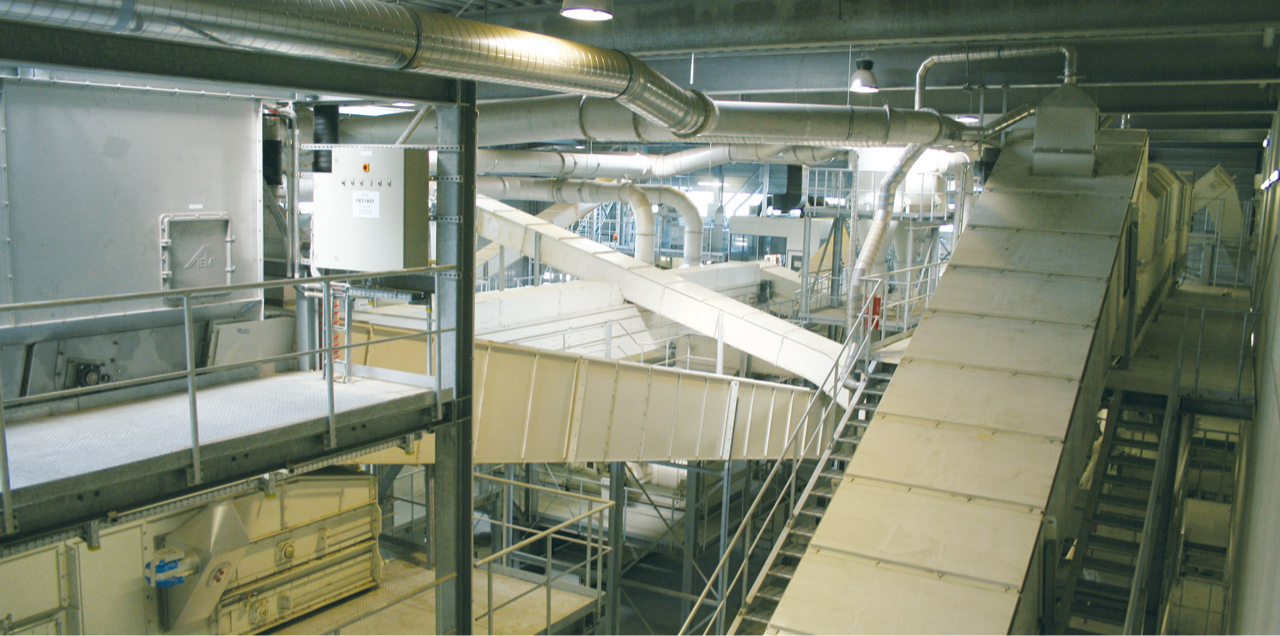
Treatment – mechanical separation
The second core area of the Stabilat® method takes effect: The mechanical separation. Due to the dry condition of the untreated refuse an efficient processing and accurate separation of the materials is now possible. The dried waste is transported to the separating aggregates via conveyer belts.
In the disc screen the first rough separation by fractioning by size takes place. The individual material streams are then separated by their density into heavy and light components.
Air separation
This "material separation" happens for different grain sizes in air ovens and air separators. Light materials such as paper, wood, plastic and textiles are separated by air streams from heavy inert materials such as glass, ceramics, stones and metals.
Some material streams are separated into even smaller grain size for a more effective density separation. This is done by means of vibrating screens.
Light and heavy fractions bigger than 35 mm are post chopped additionally.
Mechanical separation
From the heavy and light fraction ferrous metals such as steel are sorted out by means of magnetic tape separators and magnetic drums and are discharged into a separate material flow.
In eddy current separators nonmagnetic but conductive metals such as aluminium and copper are separated by fast rotating magnets and may then be supplied for industrial use.
In the complex interaction of different substances, there are always composite materials which may not be covered by this separation procedure separated by this method. These include, above all, batteries and plastics containing chlorine. As these are causing damage to the environment in combustion as well as in untreated disposal, they have to be sorted out by hand and disposed of in a special way.


